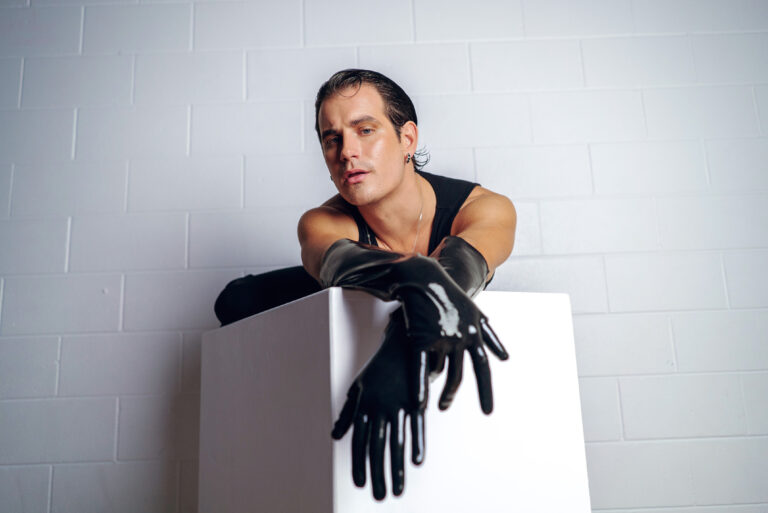As dancers, Seán Curran, Yvette L. Campbell and John-Mario Sevilla had illustrious performing careers with Bill T. Jones/Arnie Zane Dance Company, Elisa Monte Dance and Pilobolus, respectively. Now, as arts educators, they run a diverse range of New York City programs: educating their communities, bringing the arts to the underserved and teaching the value of rigor and discipline to a generation accustomed to immediate satisfaction. Dance Teacher recently asked the three to discuss the state of arts education and what it takes to be a dancer in 2014.
DT: What are you doing to change the state of arts education?
YC: Arts education is being stripped from American schools at an alarming rate, especially in underserved communities. The fact is the arts are essential to a well-rounded education. Many families from the community we serve cannot afford to provide their children with private piano lessons, ballet classes and other high-quality arts instruction. True education reform in our public schools must include sustained access to quality arts programs. We work with the Department of Education to bring arts to NYC schools that have very little. Currently we are in 25 different schools in four boroughs and work with charter schools in the area, bussing them to Harlem School of the Arts for their arts classes. We have doubled our scholarship money each year and hope to continue to do so. My dream is to be a hub in our community, with panels, lectures, rehearsals and presentations in our theater.
JMS: Here’s a statistic to demonstrate the state of dance education: The NYC Department of Education is comprised of about 1,750 schools with about 1.1 million students. There are 200–250 dance teachers that can be identified in the system. At 92nd Street Y and Dance Education Laboratory, we’re trying to build an army of dance educators to ensure that every child has a dance education. We’re encouraging all artists and educators to place the beauty and ingenuity of dance in the bodies of children. We understand that NYC is diverse. So, it’s inevitable that dance programming have a global perspective.
Dance is part of a bigger conversation that the arts education community is fighting to become part of, surrounding national goals for the country. Today, in K–12, there is a pull away from arts education unless you make a case for it to be a part of the national Common Core (Obama’s education initiative) requirements. There is no Common Core or “literacy” yet for the arts. There is a push to add the arts to make STEM (science, technology, engineering and mathematics) into STEAM. For me that is important for the future.
SC: Today, dancers are more finished in terms of technique when they come to us, but I wish they had a more sophisticated knowledge of the dance world. In composition class I give creative problems and show them examples by the masters. If you understand composition and improvisation, you make yourself more useful to choreographers. You don’t have to be a choreographer—you have to think like one! Now that there are so many repertory companies where you work with a multitude of choreographers, you need to be fluent in other “languages.”
At NYU we are making a concerted effort to teach the business of dance. We have arts administration classes, resumé writing, dance for the camera, production and visual design. We are collaborating with New York City Ballet in our dance and new media program. There is also a focus on somatics and other training modalities for health and well-being.”
DT: How do dance on television and popular media trends impact you?
SC: Having dance on TV is bringing more boys to dance. More young men are auditioning, and they are much more accomplished and technically assured. I, personally, get engaged with the hip-hop stuff on the competition shows because of the movement invention. I think if break dancing gets the boys into the studio, great. I hope they have the chance to study some modern and ballet, too.
JMS: A challenge for dance teachers and practitioners is the cultural perception that dance is just fun and entertainment. Don’t get me wrong, dance is intensely fun, but as with anything you devote to studying, the discipline becomes more complex and curious as you probe further. The question is, how does one use this constantly morphing media constructively? The dancing on television is often dazzlingly physical, but it values a certain way of moving and communication that doesn’t capture the full potential of dance expression. Dance, to me, has a much broader range of experience and deeper understanding, and electronic media doesn’t always convey the subtler tensions, living mystery and immediate transformation.
YC: It seems as if young people only know how to move from their fingertips to elbows. Dance is a whole-body experience. We have to teach students that nothing takes the place of physicality, which builds muscle memory. We need to get kids moving.
DT: Is NYC really the place to make a dance career happen? It’s such a hard life here. What do dancers get here that they can’t get in other places?
SC: I tell young dancers that they don’t have to make a career in NYC, but they should come and live here for a year or two to experience what is arguably the dance capital of the world. Whether it is in a class, a rehearsal hall, as an audience member or even on a subway, there is a unique, nourishing kind of energy, competition and urgency that you will not find anywhere else. You could take a vastly different class and see radically different kinds of dance every day for weeks on end in NYC. They should come here and then go dazzle and entertain and challenge and inspire audiences and other dancers anywhere they’d like.
JMS: Dance in NYC is special. Life is terribly challenging here, but there is much learning and growing in the struggle to succeed here. Also, success in dance can mean many things, not always a full-time performance gig. So, I hope we’re training dancers to be adaptable and pragmatic artists. I hope the younger generation sees possibilities in all of the creative dance-related fields, such as dance education, somatic therapies and arts administration.
YC: Dance teachers need to give students knowledge and let them fly. Prepare them for the world stages. It isn’t only about getting to NYC. We didn’t come from New York. We came from all over to “make it here,” and dance happens everywhere. DT
“Sweat is the perfume of accomplishment.” —Seán Curran
Seán Curran
Associate Arts Professor and Co-Chair
New York University, Tisch School of the Arts
Department of Dance
Seán Curran believes that “luck is when preparedness and opportunity meet.” When Bill T. Jones made a work at New York University during Curran’s senior year as a BFA student, Jones asked him to apprentice with his company. “I wanted to be Ben Vereen or Joel Grey, so I foolishly said no,” says Curran. “Luckily, my second chance came after graduation when I was working at Urban Outfitters. Jones came in to buy a suitcase for an upcoming tour and said, ‘You should be dancing.’ I danced with Bill T. Jones/Arnie Zane for 10 years.”
Curran is now back at NYU’s Tisch School of the Arts as a faculty member and co-chair of the dance department. (He will become chair later in 2014.) NYU’s conservatory programs offer a BFA and MFA for students whose goal is to become performers or choreographers. Known for his choreographic wit and blending of Irish and modern dance styles, Curran recently celebrated the 15th anniversary of his own company.
“It is a different professional world students are graduating into now. They are experiencing a world and culture so incredibly different from their teachers’. Students don’t have phone conversations; it is all texts and e-mail and Facebook. They take notes and watch dances on their iPhones! The challenge is to deal with all that and still push them forward and get them to go deeper into a real-time–based physical artform—so they understand that sweat is the ‘perfume of accomplishment’ and that the body learns through repetition.”
“The arts make us human. They teach us to fly.” —Yvette L. Campbell
Yvette L. Campbell
President and CEO
Harlem School of the Arts
“I demand excellence from my staff and educators, something I learned from Denise Jefferson and Sharon Luckman at Alvin Ailey,” says Yvette L. Campbell, who took the reins of Harlem School of the Arts in 2011, shortly after a group of donors saved the school from closing. “They both had a great work ethic and real clarity as leaders. I am not an educator; I see the bigger picture. I have a vision and can put together a program. I also like puzzles—the more pieces the better!”
Campbell came to dance late, studying under former Martha Graham dancer David Wood at the University of California at Berkeley while majoring in applied mathematics. She went on to perform with Ailey II and Elisa Monte Dance. While recovering from an injury, she worked as an interim school administrator at Ailey under Jefferson, and in 2005 created the Ailey Extension, its highly successful community dance program.
HSA provides after-school programs in music, dance, theater, visual arts and musical theater. Ninety faculty and teaching artists reach 3,100 children annually, with both onsite classes and residencies in 26 schools throughout four boroughs in New York. “When I came to HSA, I made a total culture shift,” says Campbell. “For instance, it was not OK anymore for teachers to be late or not show up at all. The kids deserve better than that! I tell my staff, just like a performance, when the curtain goes up at 8 pm you have to be ready—no matter what!”
“If you want to have a life in dance—not just until your 30s—you need a lot of skills to go from one stage to the next.” —John-Mario Sevilla
John-Mario Sevilla
Director, Harkness Dance Center
92nd Street Y
“I am blown away by dancers today,” says John-Mario Sevilla. “But I work in a community center, not a conservatory. I am cultivating a different kind of artistry and aesthetic. I want to nurture imagination. That is exactly why people hire dancers—they are great problem solvers.”
Since 2007 Sevilla has directed the Dance Education Laboratory at the 92nd Street Y’s Harkness Dance Center. In 2012, he became Center director, overseeing three different performance series, 100 classes and workshops, space grants for choreographers, social dance parties and dance therapy training. Harkness has an extensive history of bringing modern dance luminaries to teach and perform there, including Paul Taylor with his groundbreaking Seven New Dances.
“To make it—especially in NYC—you have to have that extra commitment. I tried to have a well-rounded background so that I could be a little more flexible and allow for other opportunities to come my way. I got a teaching degree and was heading back to my hometown on Maui to be a lawyer. I thought that was what I wanted if I didn’t become a dancer. I had thought I would be a Paul Taylor dancer, and then Pilobolus hired me.”
Rachel Berman is a former dancer with the Paul Taylor Dance Company and an educator, manager, fundraiser and freelance writer.
Photos (from top) by Matthew Murphy; Francisco Graciano; Buck Ennis/Crain’s New York Business, courtesy of Harlem School of the Arts; Julie Lemberger, courtesy of 92nd Street Y



